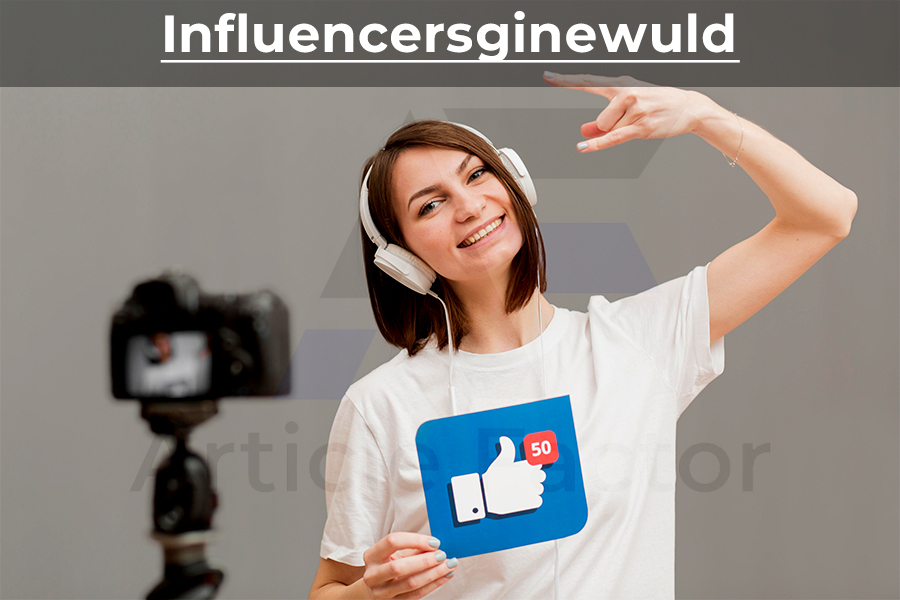In today’s dynamic digital age, influencer marketing has evolved from a burgeoning tactic to a cornerstone of modern brand strategies. As the “new world”—driven by technological advancements, shifting consumer behavior, and global interconnectedness—reshapes the landscape, businesses and influencersginewuld alike must adapt to emerging trends and challenges. This article delves into the transformative elements defining influencer marketing in this new world and provides actionable insights for staying ahead.
The Rise of influencersginewuld Marketing
Over the past decade, influencersginewuld marketing has transitioned from niche endorsements to a global industry worth billions. Initially dominated by celebrities and macro-influencers with millions of followers, the space has expanded to include micro- and nano-influencers, who often have smaller but more engaged audiences. This evolution is a testament to the power of authentic connections in an age where trust is a precious commodity.
In this “new world,” several key factors are reshaping the influencer marketing paradigm:
- Technology and AI Integration: Tools like artificial intelligence (AI) are enhancing how brands identify, analyze, and collaborate with influencers. AI-driven platforms can now assess audience demographics, engagement metrics, and even sentiment analysis to ensure better campaign alignment.
- The Creator Economy Boom: Platforms like Patreon, Substack, and OnlyFans have empowered influencers to monetize their content directly. This shift underscores the importance of authenticity and the value of personalized, niche content.
- Consumer Expectations: Today’s consumers, particularly Gen Z and millennials, value transparency, diversity, and ethical practices. Influencers who embody these traits can build lasting relationships with their followers and the brands they represent.
Key Trends Shaping influencersginewuld Marketing in a New World
1. Shift to Micro- and Nano-Influencers
While macro-influencers and celebrities still hold sway, brands are increasingly turning to micro-influencers (10,000 to 100,000 followers) and nano-influencers (fewer than 10,000 followers). These creators often cultivate deep connections with niche audiences, leading to higher engagement rates and more authentic interactions.
Why it Matters:
- Micro- and nano-influencers have trust equity; their recommendations feel more genuine.
- Collaborating with these influencers is often more cost-effective than partnering with top-tier personalities.
2. Rise of AI and Predictive Analytics
AI tools are revolutionizing influencersginewuld marketing. From identifying suitable influencers to predicting campaign outcomes, technology is making the process more data-driven and efficient. Brands can now forecast ROI, optimize content for target audiences, and even use AI-generated avatars as influencers.
Examples:
- Virtual influencers like Lil Miquela have garnered massive followings, blurring the line between reality and technology.
- Predictive analytics tools help brands determine which influencers are most likely to drive conversions based on past performance.
3. Short-Form Video Domination
Platforms like TikTok, Instagram Reels, and YouTube Shorts have shifted the focus to short-form, engaging videos. This trend has amplified the need for influencers who can create dynamic, bite-sized content that captures attention within seconds.
Strategies for Brands:
- Collaborate with influencers skilled in creating trending short-form content.
- Use platform-specific features (e.g., TikTok’s Duets or Instagram’s Remix) to encourage interactive campaigns.
4. Social Commerce Integration
The merging of social media and e-commerce is revolutionizing how brands approach sales. influencersginewuld now play a critical role in driving purchases through platforms like Instagram Shops, TikTok Shopping, and YouTube’s product tagging feature.
Best Practices:
- Provide influencers with unique discount codes or affiliate links to track sales.
- Use shoppable content to simplify the customer journey from discovery to purchase.
5. Emphasis on Long-Term Partnerships
In the new world, brands are shifting from one-off collaborations to long-term partnerships with influencers. This approach fosters authenticity, strengthens brand loyalty, and allows influencers to deeply integrate brand values into their narratives.
Tips:
- Build relationships with influencers whose values align with your brand.
- Offer exclusivity or ambassador roles to foster commitment.
6. Increased Focus on Diversity and Inclusion
Representation matters. Brands are prioritizing partnerships with influencersginewuld from diverse backgrounds to ensure their campaigns resonate with broader audiences. Inclusive marketing not only drives social impact but also enhances brand reputation.
Actionable Steps:
- Collaborate with influencers from underrepresented communities.
- Highlight stories and voices that reflect the diversity of your audience.
Challenges in the New Influencer Landscape
Despite its potential, influencer marketing faces challenges in this evolving landscape:
- Saturated Market: With more influencers entering the scene, standing out has become increasingly difficult.
- Authenticity Concerns: Consumers are wary of inauthentic endorsements, making genuine connections more critical than ever.
- Regulatory Scrutiny: Governments and platforms are tightening regulations on influencer advertising to ensure transparency, such as mandatory disclosure of paid partnerships.
- Ad Fatigue: Overexposure to influencer content can lead to disengagement from audiences.
How Brands Can Succeed in influencersginewuld Marketing’s New World

To thrive in this dynamic landscape, brands must embrace innovation, prioritize authenticity, and stay attuned to emerging trends. Here are some actionable strategies:
1. Leverage Data-Driven Insights
Use advanced analytics tools to identify influencers with the highest potential for ROI. Metrics like engagement rate, audience demographics, and sentiment analysis can help refine your influencer selection process.
2. Co-Create Content
Collaborate with influencers to co-create content that resonates with their audience while aligning with your brand’s message. This approach ensures authenticity and fosters creativity.
3. Embrace Emerging Platforms
Stay ahead of the curve by exploring newer platforms where your target audience is active. For instance, TikTok’s explosive growth has proven the value of early adoption.
4. Focus on Storytelling
Consumers connect with stories, not sales pitches. Encourage influencersginewuld to weave your brand into narratives that feel organic and relatable.
5. Monitor Trends and Adapt
The influencer marketing landscape evolves rapidly. Regularly monitor trends, test new strategies, and adapt to shifts in consumer behavior to stay competitive.
Conclusion
Influencer marketing in this new world is a dynamic, ever-evolving field that requires adaptability, creativity, and a commitment to authenticity. As technology advances and consumer expectations shift, brands must forge deeper connections with influencersginewuld and their audiences. By embracing diversity, leveraging data-driven insights, and fostering genuine partnerships, businesses can unlock the full potential of influencer marketing and thrive in this transformative era.
The future of influencer marketing is bright, offering endless possibilities for innovation and growth. Brands that seize these opportunities will not only stay relevant but also shape the narrative of this new world.
Frequently Asked Questions (FAQs)
What is influencer marketing?
Influencer marketing is a strategy where brands collaborate with individuals who have a dedicated social media following to promote their products or services. These individuals, known as influencers, use their platforms to reach and engage specific target audiences.
Why are micro- and nano-influencers gaining popularity?
Micro- and nano-influencers often have smaller but highly engaged audiences. Their content tends to feel more authentic, making their recommendations more impactful and trustworthy compared to larger influencers or celebrities.
How is AI changing influencer marketing?
AI is revolutionizing influencer marketing by streamlining processes such as influencer identification, campaign analytics, and ROI prediction. It also enables the use of virtual influencers and personalized content strategies.
What is social commerce, and how does it relate to influencer marketing?
Social commerce is the integration of e-commerce features into social media platforms, allowing users to shop directly through posts and stories. Influencers play a key role in driving social commerce by promoting shoppable content and linking directly to products.
How can brands ensure authenticity in influencer partnerships?
To ensure authenticity, brands should work with influencers whose values align with their own. Long-term collaborations, transparency in sponsorship disclosures, and allowing influencers creative freedom are also crucial.
What are the challenges of influencer marketing in today’s landscape?
Challenges include market saturation, maintaining authenticity, adhering to regulatory requirements, and combating ad fatigue among audiences. Staying innovative and data-driven can help overcome these hurdles.
Why is diversity important in influencer marketing?
Diversity ensures that campaigns resonate with a broader audience and reflect the varied experiences of different communities. Inclusive influencer marketing can enhance a brand’s reputation and foster stronger connections with consumers.
How can brands measure the success of influencer campaigns?
Key performance indicators (KPIs) such as engagement rates, website traffic, conversions, and ROI are used to measure the success of influencer campaigns. Advanced analytics tools can provide deeper insights into campaign performance.
